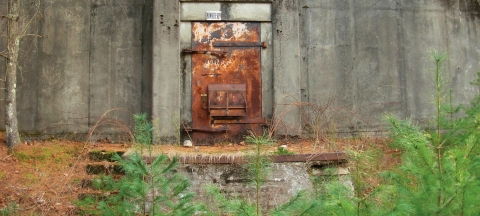About Us
Welcome to Assabet River National Wildlife Refuge, located in the towns of Sudbury, Stow, Maynard and Hudson, and just 20 miles west of Boston. Assabet River NWR is one of eight national wildlife refuges that comprise the Eastern Massachusetts National Wildlife Refuge Complex. Over time the lands the refuge sits on were traditionally hunted and fished by Nipmuc Tribes, farmed by colonists, crossed by railroad and eventually used for military training. This area was known as the Sudbury Training Annex, part of Fort Devens and the U.S. Army, until 2000 when over 2,000 acres were transferred to the U.S. Fish and Wildlife Service, therefore establishing the refuge.
Important habitat types on the refuge, such as freshwater wetlands, oak-pine forest, and shrubland are crucial to migratory bird conservation. Wildlife that call Assabet River home include waterfowl, wading birds, songbirds, raptors, American beaver, bobcat, white-tailed deer, and various reptiles and amphibians.
Our Mission
Vision
- The Eastern Massachusetts National Wildlife Refuge Complex will contribute to the mission of the Refuge System and support ecosystem–wide priority wildlife and natural communities. Management will maximize the diversity and abundance of fish and wildlife with emphasis on threatened and endangered species, migratory birds, and aquatic resources.
- The Complex will have a well-funded and community supported acquisition program which contributes to wildlife conservation. The refuges will be well known nationally and appreciated in their communities. They will be seen as active partners in their communities, school systems, and environmental organizations which will result in high levels of support for the refuges.
- The refuges will be a showcase for sound wildlife management techniques and will offer top-quality, compatible, wildlife dependent recreational activities. Refuges open to the public will provide staffed visitor contact facilities that are clean, attractive, and accessible, with effective environmental education and interpretation.
Refuge Purpose(s)
- Each unit of the National Wildlife Refuge System is established to serve a statutory purpose that targets the conservation of native species dependent on its lands and waters. All activities on those acres are reviewed for compatibility with this statutory purpose.
- Assabet River National Wildlife Refuge purpose is its “...particular value in carrying out the national migratory bird management program.” (16. US.C. 667b-d, as amended).
- Assabet River National Wildlife Refuge was established in 2000 under an Act Authorizing the Transfer of Certain Real Property for Wildlife, or Other Purposes. (16 U.S.C. 667b).
Our History
- 5500 BC: First settlements of people of this area, based on archeological remains found. Presumably the Nipmuc Tribes, which were here when the British colonists arrive to this area.
- 1630s: British Colonists arrive to this region. This land was converted into small family farms and homesteads.
- 1942: Eminent Domain goes into effect as the U.S. Army buys this land area, eventually creating Fort Devens.
- September 28, 2000: Assabet River National Wildlife Refuge becomes established when the U.S. Army transferred 2,230 acres to U.S. Fish and Wildlife Service.
- March 2005: Assabet River National Wildlife Refuge is open to public.
Other Facilities in this Complex
Situated along the Atlantic Flyway in Massachusetts, the Eastern Massachusetts National Wildlife Refuge Complex is comprised of eight ecologically diverse refuges. The eight individual refuges include inland and coastal wetlands, forests, grasslands, and barrier beaches that provide important habitat for migratory birds, mammals, plants, reptiles and amphibians.
Complex headquarters is located at Assabet River National Wildlife Refuge, 680 Hudson Road, Sudbury, MA, 01776. Phone: (978) 443-4661.




